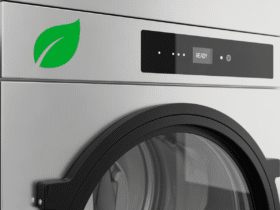Table of Contents
- Introduction
- Understabathroom’s Space
- Budgeting for a Bathroom Renovation
- Essential Features to Consider
- Trends Transforming Modern Bathrooms
- Sustainable Choices in Bathroom Renovations
- Maximizing Small Bathroom Spaces
- Final Thoughts
Introduction
The humble bathroom has recently evolved from a purely functional space into a luxurious at-home retreat. As contemporary homeowners seek to transform their living spaces, understanding the role of expert bathroom renovation contractors has become crucial in balancing style and function. Whether envisioning a minor facelift or a complete overhaul, staying informed about the latest trends and innovative concepts is invaluable in crafting a space that exudes boyou’refort and elegance.
The journey to transform your bathroom begins with clearly understanding your goals and the possibilities. With numerous considerations at play—from layout designs to fixture selections to sustainability options—embarking on a bathroom renovation project can be both exciting and daunting. However, with meticulous planning and insights from industry experts, it transforms into an opportunity to lay down a foundation for a space that not only meets your current needs but also adapts to future aspirations.
Key Takeaways
- Easy tips to elevate your bathroom’s style and function.
- Insights into current bathroom trends.
- Guidance on sustainable and budget-friendly renovation choices.
Understanding Your Space
The first step in any renovation project is thoroughly evaluating your bathroom’s current layout and constraints. This practical assessment is crucial for informing design choices, preventing costly mistakes, and setting realistic expectations for the renovation process. Begin by measuring the dimensions of the space, including the height, width, and depth of the room. It’s also important to consider the location of existing fixtures such as the sink, toilet, shower, and storage areas. It’s also important to note any architectural features, such as windows or doors, that may affect the bathroom’s layout. Understanding spatial limitations is key when planning your renovation. Consider how you use the bathroom and identify areas where the design may hinder efficiency or comfort. For example, think about traffic flow—can multiple people use the space simultaneously without conflict? Are there storage solutions that can be optimized to reduce clutter? By being mindful of these dynamics, you can make informed decisions about where to expand, conserve, or reconfigure space for maximum efficiency.
Moreover, a recent home design report shows that homeowners who invest time analyzing their bathroom’s spatial dynamics are significantly more equipped to achieve successful renovations. This analysis allows for a practical approach to design and helps establish a perfect balance between aesthetics and utility. Considering factors such as lighting, color schemes, and the ambient feel of the space can enhance overall satisfaction with the renovation. By combining functionality with visual appeal, you can create a bathroom that is not only beautiful but also tailored to suit your daily needs.
Budgeting for a Bathroom Renovation
Once you’ve assessed your space, developing a realistic budget becomes indispensable. Today’s budget serves as a financial blueprint and allows you to allocate funds effectively, ensuring that critical components of your renovation are prioritized while adhering to financial boundaries. A well-thought-out budget should typically encompass various categories, including materials, labor, permits, and design fees, along with a contingency reserve of around 10-15% for unforeseen expenses, such as structural issues or delays in the timeline, which often arise during renovation projects. Homeowners should focus on elements that offer significant impact, such as energy-efficient fixtures that can reduce utility costs over time and modern lighting solutions that enhance aesthetic appeal and functionality, helping to transform the space without overextending resources. Additionally, consider researching local trends and consulting with design professionals to ensure that your renovations align with market demands, ultimately maximizing the value of your home.
Essential Features to Consider
When redesigning your bathroom, identifying the core features is crucial in shaping its overall aesthetic and functionality. Key components such as showers, bathtubs, sinks, and toilets not only define the space’s style but also impact its usability and comfort. For example, opting for a walk-in shower with a glass enclosure can create an illusion of spaciousness, while a freestanding soaking tub can be a stunning focal point.
Incorporating smart storage solutions, such as built-in shelves or vanity cabinets with organizers, maximizes space and minimizes clutter, making the bathroom more efficient. Additionally, choosing water-efficient fixtures, such as low-flow toilets and faucets, not only supports a more sustainable lifestyle by conserving water but also significantly saves utility bills over time. This shift toward sustainability aligns with an increasing global emphasis on environmental conservation and responsible resource management. Furthermore, considering materials that are durable and easy to maintain, such as porcelain tiles or quartz countertops, can enhance the longevity of your redesign while also providing an elegant touch to your bathroom.
Trends Transforming Modern Bathrooms
Today’s bathrooms are evolving into luxurious retreats that integrate advanced technology with elegant design, transforming them from functional homes into personal oases of relaxation. Innovations like smart mirrors equipped with integrated entertainment systems allow users to catch up on news or enjoy music while getting ready. Advanced lighting controls enable customizable ambiance, enhancing functionality and mood, while underfloor heating adds a touch of comfort during colder months.
In addition to these technological advancements, the design trends in modern bathrooms reflect a growing emphasis on minimalism. Open space designs prioritize accessibility and tranquility, while large windows and skylights invite natural light to create a bright and airy atmosphere. The use of organic materials such as bamboo and stone not only adds to the aesthetic appeal but also promotes sustainability. Homeowners are increasingly seeking features like rainfall showerheads, freestanding bathtubs, and smart water-management systems to enrich their spa-like experience further, ultimately making the bathroom a sanctuary for relaxation and rejuvenation.
Sustainable Choices in Bathroom Renovations
Incorporating eco-friendly options in bathroom renovations is not just a trend; it’s becoming an essential aspect of responsible living. This approach includes using recycled materials, such as tiles made from repurposed glass or reclaimed wood for vanities, which can significantly reduce waste. Installing water-saving fixtures, such as low-flow showerheads and dual-flush toilets, can substantially reduce water consumption, helping conserve this vital resource. Furthermore, energy-efficient LED lighting lowers energy bills and has a longer lifespan than traditional bulbs, reducing the frequency of replacements and waste. Homeowners align with a broader societal shift towards environmentally conscious living by focusing on sustainably sourced materials, like bamboo or rapidly renewable cork. These practices mitigate environmental impact and offer potential cost savings over time. Ultimately, these choices empower homeowners to contribute to a sustainable future while enhancing their bathrooms’ aesthetic and functional quality.
Maximizing Small Bathroom Spaces
Small bathrooms often present unique challenges for homeowners seeking to balance functionality and style. Choosing a light color palette, such as soft whites, pale blues, or light grays, can help create the illusion of a more expansive space, making the room feel brighter and more open. Additionally, incorporating mirrors strategically can enhance this effect by reflecting light and giving depth to the room.
Consider innovative storage solutions like wall-mounted shelves, under-sink cabinets, and vertical storage units that utilize otherwise wasted space to maximize utility in a compact area. Installing hooks or racks on the back of doors helps keep the area organized without cluttering surfaces.
For those aiming to improve the functionality and aesthetic of small bathrooms, consulting a comprehensive guide on bathroom design can offer a wealth of practical ideas. These resources often include tips on selecting the right fixtures, optimizing layout, and choosing durable and visually appealing materials. Many guides also highlight trends in space-saving technologies and recommend fittings like floating vanities or corner sinks that can significantly enhance smaller spaces, providing a blend of comfort, style, and efficiency.
Final Thoughts
Embarking on a bathroom renovation offers an invaluable opportunity to enhance your home’s comfort and value. To start, it’s crucial to thoroughly assess your existing space, considering factors such as layout, plumbing, and lighting, to identify which areas require improvement or a complete redesign. Establishing a realistic budget is equally important; consider not only the costs of materials and fixtures but also labor, unexpected expenses, and potential permits required for structural changes.
When planning your renovation, it’s essential to stay updated on modern trends, such as minimalist designs, smart home technology, and eco-friendly materials, which can elevate the appeal and functionality of your space. Sustainable practices—like installing low-flow faucets, energy-efficient lighting, and using recycled or sustainably sourced materials—significantly contribute to environmental well-being and reduce long-term utility costs.
Thoughtful design is key to creating a luxurious and efficient bathroom, even in smaller spaces. Utilizing multi-functional furnishings, maximizing storage with clever cabinetry solutions, and employing light colors and strategic mirrors can create an illusion of space and light.
Lastly, enlisting the expertise of skilled bathroom renovation contractors can streamline the process. They bring valuable insights, technical skills, and project management that ensure your renovation runs smoothly and adheres to your vision. With meticulous planning and expert guidance, you can craft a bathroom that meets your current needs and adapts to your evolving lifestyle for years to come.














